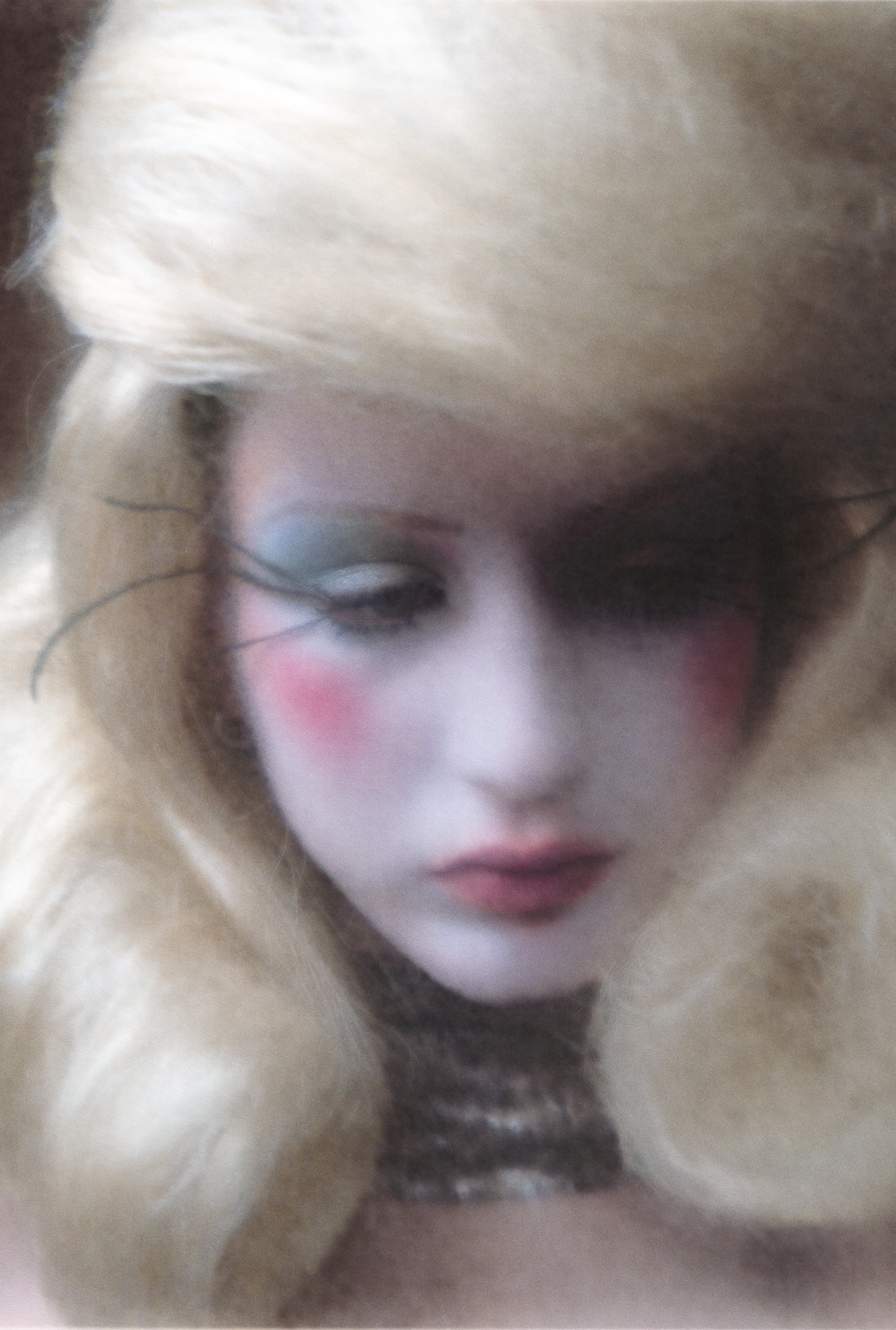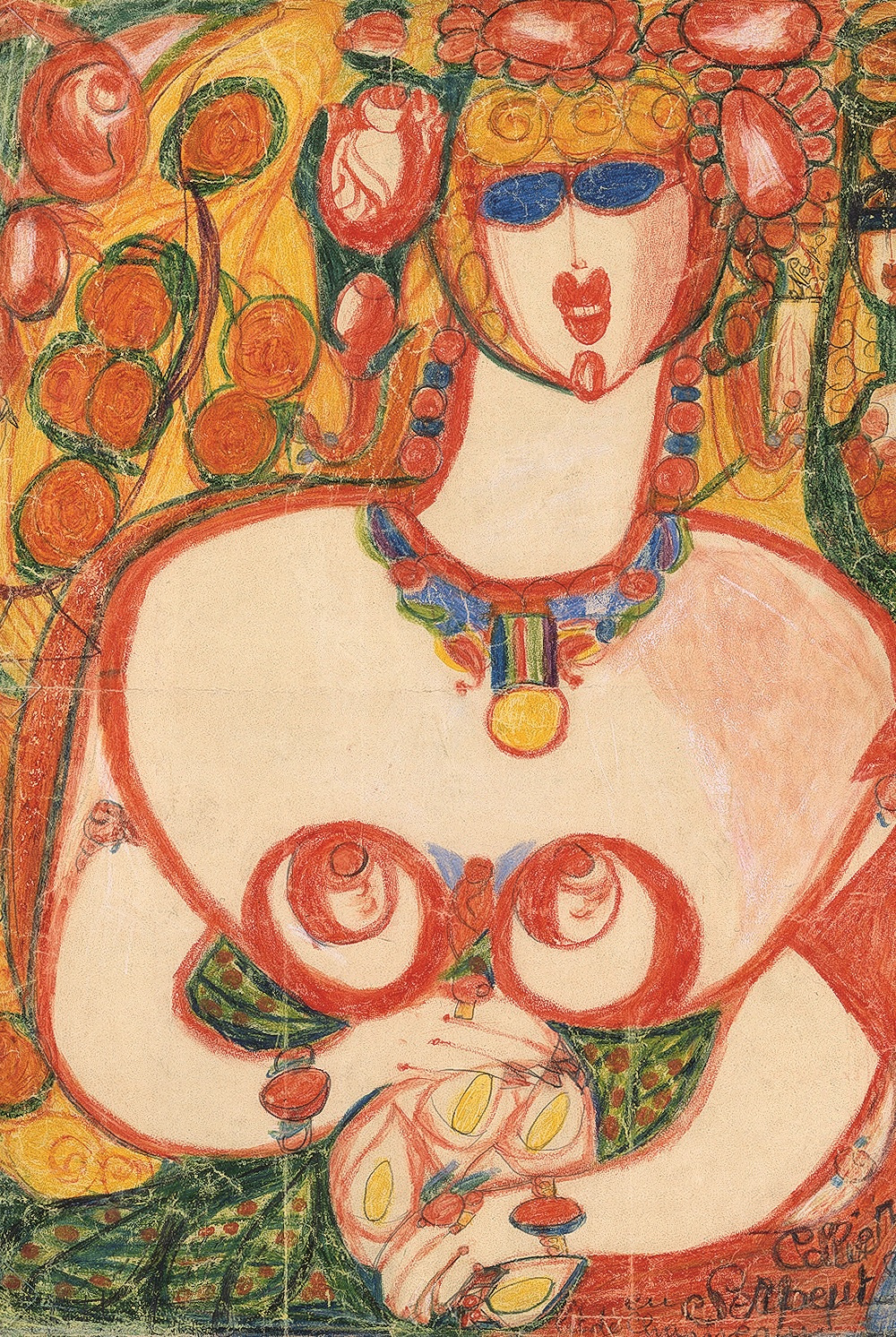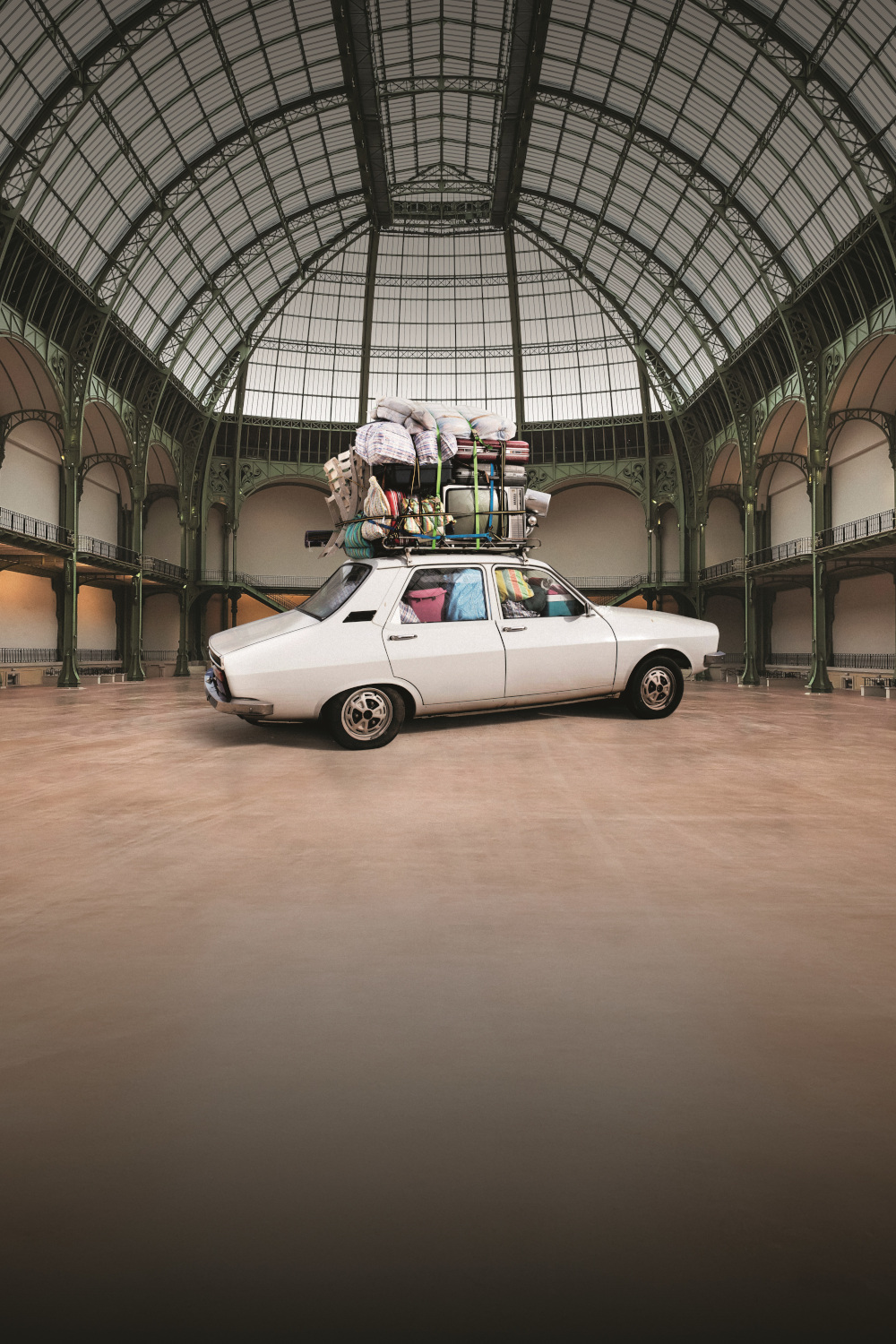Paris / Grand Paris
70% of visitors to the Centre Pompidou, the Institute for Research and Coordination in Acoustics/Music (Ircam) and the Public Information Library (Bpi) come from the Île-de-France region in and around Paris. It is therefore essential to remain active in Paris, particularly on the Beaubourg Plateau, and in Île-de-France. Ircam will remain open and continue to welcome the public to its premises. The Bpi will be temporarily relocated to the Lumière building in Paris's 12th arrondissement. As for the Centre Pompidou, it will be extending its artistic, cultural and educational programming to a number of partner institutions, through often longstanding relationships.
The partnership between the Centre Pompidou and Grand Palais RMN is part of a long history shared by the two establishments, dating back to 1964, when the Galeries Nationales were opened. As the renovation works at the Centre coincide with the reopening of the Grand Palais, an unprecedented partnership has been created under the aegis of the Ministry for Culture, which will mean that major, popular exhibitions of modern and contemporary art can continue to be held in Paris.
In a spirit of co-production on an equal footing with GrandPalaisRMN, the Centre Pompidou will handle the programming of two exhibition tours, in the Champs-Elysées galleries (2,000 m2) and Seine galleries (800 m2). Over the next five years, the general public will thus enjoy four exhibitions a year in this fully restored venue in central Paris.
The multidisciplinary events (cinema, live performances, meetups, etc.) typically offered by Centre Pompidou will be held at certain times of the year in other areas of the Grand Palais (auditoriums, galleries or the Nave), in line with the rest of the venue's programming.
Just like « Idoles. Dialogue de l'antique et du moderne » ("Idols: when ancient and modern art interact”), currently presented in the collection of the Musée National d'Art Moderne and combining Cycladic and Anatolian statuettes and sculptures by modern artists, the Musée du Louvre and Centre Pompidou are embarking on a partnership that will help rethink the presentation of national collections held by various national museums, going beyond how they are divided up between conservation sites to create an unprecedented "imaginary museum".
Focused around a given theme, the public will discover works of art from the Louvre in dialogue with modern and contemporary art, opening the door to affinity, surprise, resonance or paradox - and vice versa -, encouraging them to rethink key moments in the history of art and consider its continuity and rupture in a different way.
The first exhibition
Objets, or The History of Objects
Rooms in the Objets d’art department
February – July 2027
This inaugural dialogue between the collections of these two major institutions will focus on the notion of objects in modern and contemporary creation, echoing the notion of objet d’art, an expression used since the 19th century to designate the collections of decorative arts at the Louvre, from the Middle Ages through to the French Second Empire.
Throughout the 20th century and through to the present day, this perception of decorative arts has enjoyed renewed popularity. From Pablo Picasso’s passion for the volutes on a pair of rocaille-style andirons belonging to François-Thomas Germain, to Sheila Hicks’ love of huge medieval and Renaissance tapestries; from the established affinities of Italian and modern designers with their predecessors; from Duchamp's readymade to Philippe Mayaux's objects in the window…
Crossing borders and eras, questioning the notion of decoration as much as the reign of objects, these encounters between decorative arts and modern and contemporary works, the exhibition invites visitors to take pleasure in discovery, mapping out another form of "museum imaginary" for them.
Curators: Olivier Gabet, director of Objets d’art department, musée du Louvre / Marie-Ange Brayer, curator in chief, Service design et prospective industrielle ; Sophie Duplaix, curator in chief, Collections contemporaines
Co-organisation: Musée du Louvre and Centre Pompidou
Motivated by the desire to transcend the division of national collections between museums, the Centre Pompidou aims to forge closer links with other institutions.
The relationship between primitive art and modern and contemporary art will be celebrated through a partnership with the Musée du Quai Branly - Jacques Chirac, while the relationship between music and art will be explored through an exhibition entitled "Kandinsky and Music" (working title), to be presented at the Philharmonie de Paris from October 2025 to January 2026.
At the Monnaie de Paris, the "Georges Mathieu" exhibition from April to September 2025 will be curated by three partners, including the Institut National d'Histoire de l'Art. The 25th edition of the Marcel Duchamp Prize will be held at the Musée National d’Art Moderne – Ville de Paris, under the joint curatorship of Julia Garimorth, Head of Contemporary Collections at MAMVP, and Jean-Pierre Criqui, Curator in the Contemporary Collections Department at MNAM.
Parallel to this, projects are being planned with other institutions including the Cité de l’Architecture et du Patrimoine, the Musée d’Orsay et de L’Orangerie, the Musée Rodin or the Jeu de Paume. There will be countless opportunities to step outside our historical perimeter, to blur the boundaries between disciplines and thus to re-interpret the history of art.
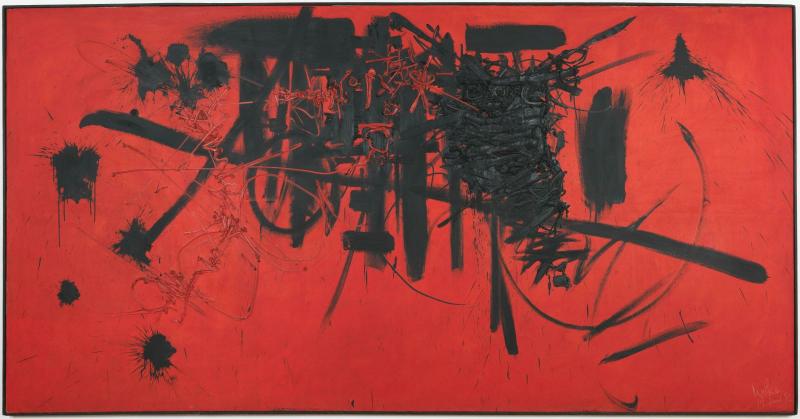
© Adagp, Paris 2024. Photo : Centre Pompidou, Mnam-Cci/Audrey Laurans/Dist. GrandPalaisRmn
Exhibition
Georges Mathieu
Geste, vitesse, mouvement
La Monnaie de Paris
11 April – 7 September 2025
A retrospective exhibition, it traces the artistic journey of Georges Mathieu (1921-2012), the founder of lyrical abstraction, through eight chrono-thematic sections. As early as 1947, seeking to capture the creative moment, Mathieu rejected geometric forms of art in favor of spontaneous gestural painting, characterized by rapid execution and raw emotion. His quest for freedom occasionally led him to create his large abstract compositions in public.
Profoundly curious, Mathieu also channeled his energy and style into applied arts: designing tableware for the Sèvres Manufactory, posters for Air France, and a series of medals for the Monnaie de Paris—including the iconic 10-franc coin minted in 1974.
Curators: Christian Briend, curator in chief, service des collections modernes, Centre Pompidou – Musée national d’art moderne ; Éric de Chassey, Director General of Institut national d’histoire de l’art à Paris and Professor of Modern and Contemporary Art History at École normale supérieure de Lyon ; Béatrice Coullaré, Head of Collections and Conservation, Monnaie de Paris

Doamine public. Photo © Robert Bayer
Exhibition
Kandinsky. La musique des couleurs
Musée de la musique-Philharmonie de Paris
13 October 2025 – 1st February 2026
A major exhibition exploring the role of music in the work of Vassily Kandinsky (1866-1944).
Nearly 200 works and objects from his studio (including scores, records, books, and tools) are brought together to highlight the fundamental place of music in his daily life, his vocation as a painter, and the evolution of his practice toward abstraction. The exhibition situates the artist's output—from Russian landscapes to Bauhaus works—within the vibrant musical context of his time, underscores his organic vision of art and the musicality inherent in his creative process, and even recreates several of his synesthetic experiments.
Curators: Angela Lampe, curator, Musée national d’art moderne, Centre Pompidou; Marie-Pauline Martin, Director, Musée de la musique – Philharmonie de Paris
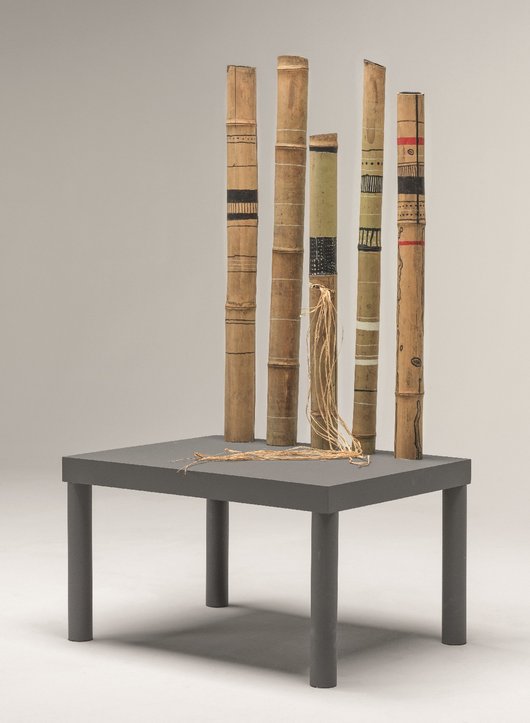
© Adagp, Paris. Photo : Centre Pompidou, Mnam-Cci/Janeth Rodriguez-Garcia/Dist. GrandPalaisRmn
Exhibition
Andrea Branzi. Le règne des vivants
Musée des impressionnismes Giverny
11 July – 2 November 2025
A major figure in the history of design and architecture, Andrea Branzi (1938-2023) was deeply inspired by the work of Claude Monet, whose art was realized through the creation of the Giverny garden, an "artificial landscape" where nature, painting, and architecture converge. This exhibition invites reflection on the relationship between design and nature, showcasing key historical pieces from the Centre Pompidou collection alongside previously unseen works from the Branzi studio archives in Milan.
Complementing this, the thematic display "Collections au jardin" features a selection of works from the Giverny Museum collection, where Monet's influence can be traced throughout the 20th century, from Bonnard to Joan Mitchell.
Curators: Marie-Ange Brayer, curator in chief, service design et prospective industrielle, Musée national d’art moderne – Centre Pompidou
The Public Information Library (Bpi), the Centre Pompidou archives and the Kandinsky Library (Bk), the documentation and research centre of the Musée National d'Art Moderne, will be moving to a temporary site while the Centre is closed: the Lumière building, located at 40 Avenue des Terroirs de France in the12th arrondissement of Paris.
The Bpi
This relocation will enable the Bpi to remain true to its mission: an up-to-date library, with free access to encyclopaedic collections in physical and digital form, but without a loan system; free and open to all, with the same opening hours. A total of 9,600 m2 allocated over two floors will accommodate 80% of its collections (310,000 printed documents, 1,600 press titles and periodicals, 150 databases) and 75% of its seating capacity.
Three workshop areas will be dedicated to continuing to offer mediation activities in the areas of media and information literacy, language learning, digital literacy, job-seeking and cultural activities (writing, music, video games, comic strips, etc.)
The Bpi’s cultural programming will continue at various venues:
- in the Lumière building, most of the series of meetups, debates and workshops focusing on the humanities and contemporary issues will be held, as well as Comic Strip Thursdays and Press Start festival dedicated to video games;
- in partner venues, there will be screenings and meetups from the Documentary Film Library, the annual Cinéma du réel and Effractions festivals, and exhibitions on comics and literature.
The Centre Pompidou building and its influence in the Beaubourg district will remain active throughout the closure.
A "worksite visitor centre" will remain open, the format of which will soon be devised in conjunction with the contractors selected for the renovation project and local residents.
As was the case when the Centre was built in the 1970s, artists will also be commissioned to produce specific artworks seizing on this very special moment in Paris' urban and social history.
Ircam
Ircam will remain open, with the same activities, throughout the building works at the Centre Pompidou, from 2025 to 2030.
Founded by Pierre Boulez and currently run by Frank Madlener, this Centre Pompidou organisation is a unique place where musical creation, artistic prospects and scientific and technological innovation all converge around three main activities: creation, research and transmission. Artists will still be hosted for production residencies at the nine studios. The public will continue to enjoy its spaces – in particular the Espro concert hall, which was restored and reopened in June 2022 – with musical, experimental and professional events throughout the season. There will also be ManiFeste, Ircam's annual multi-disciplinary festival and academy, which combines music with other disciplines (theatre, dance, digital arts, visual arts). The event will be an opportunity to strengthen existing links between the programmes at all components of the Centre Pompidou.
The Centre Pompidou’s Studio 13/16 sets up shop at La Gaîté Lyrique – Factory from the Past.
Invented in 2010 at the Centre Pompidou as an area catering to teens, and developing an original ofer involving workshops and up-to-the-minute collective artistic experiences, Studio 13/16 will be moving in early 2025 through to 2027 to an arts venue run by the City Council of Paris, La Gaîté Lyrique.
Sharing values such as hospitality, transmission and cooperation, with multi-disciplinary artists in residence at La Gaîté Lyrique, the Studio 13/16 is forging ahead with its creative, participatory adventure in the new context of La Gaîté Lyrique’s "Factory from the Past". This will be an opportunity to consolidate its commitment to young people, working on topics that appeal to them and testing new setups for meetups and artistic mediation, catering to teens and young adults, on a 400-sq.m plateau, with guest artists.
In summer 2026, the Centre Pompidou is due to open a new venue for a new generation: the Centre Pompidou Francilien – fabrique de l’art. This new site covers 30,000 m2 and is scheduled to open in summer 2026. It represents an unprecedented blend of heritage challenges involved in conservation and management of works and objectives around openness and cultural programming at the regional level and beyond. It has been imagined as an "art factory", adapted to the multi-centred reality of the Île-de-France region.
It is intended to accommodate some 140,000 works from the Centre Pompidou – Musée National d'Art Moderne and 10,000 works from the Musée National Picasso-Paris. The venue has been designed as a centre of excellence for the conservation, restoration and display of works from the collections of the Musée National d'Art Moderne and Musée National Picasso-Paris. These storage spaces will be partially open to the public, so that visitors can enjoy a new way to experience artworks and discover museum professions.
The flexible premises will allow for the organisation of conferences and performances in the midst of exhibition circuits. A project called "Storehouse School" will transmit the expertise of museum professionals and knowledge around the collection. It will be offered through a range of programs: collaborations with the public during technical and artistic workshops (schools, leisure centres, families, etc.), research residencies for professionals, a resource centre open to all, design material made available, and so on. Lastly, the Centre Pompidou Francilien will be showcasing the Musée National d’Art Moderne’s new acquisitions and fostering dialogue between contemporary artistic creations.


